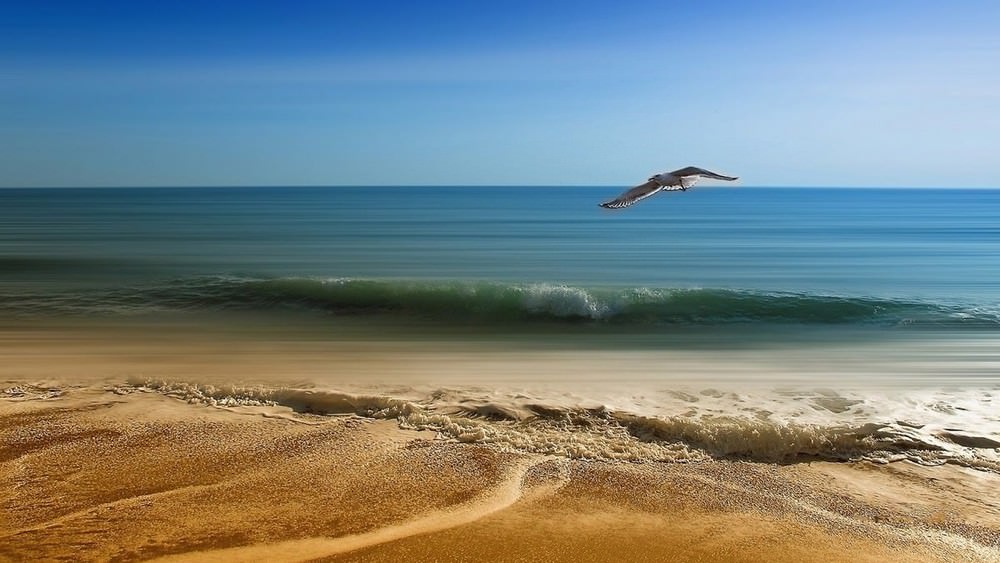The world, as we already know it, is full of surprises and wonder. Its prolific collection of flora and fauna, the enchanting traits of the animal kingdom and the marvelous wonder that takes our breath away make us the luckiest beings in the universe. One significant aspect of the world is its bodies of water.
When you look at it, the Earth is composed of 75% water and the remaining is land. In this article, we’re going to discuss the nine most amazing and breath-taking bodies of water, ever explored by human beings.
The 10 Most Stunning Bodies of Water on Earth
Lake Retba, Senegal

Picture yourself drinking a strawberry-flavored lemonade on a hot and sunny day. See the color of the beverage you’re holding? That’s the unique color of Lake Retba. It contains high amounts of salt that attract various salt harvesters, and the water helps keep people afloat.
What’s even more amazing is that you can hire a local tour guide to take you boating in its waters. Visit Lake Rekba and explore its wonders through sailing. Don’t forget to bring along reliable boat consoles and accessories.
Spotted Lake, Canada

If you’re a fan of spots and stripes for your daily outfits, you’re inevitably going to find the Spotted Lake of Canada, delightful. This nature’s wonder is composed of high levels of sulfates, alkaline, titanium, and silver. The spots usually appear during the summer season as the water evaporates, leaving circular traces of minerals.
Grand Prismatic Spring, USA

Much like the colors of the prism, the Grand Prismatic Spring embodies its vibrancy and color segmentation. It is known as the largest hot spring in Yellowstone National Park. With 50 meters of depth and 90 meters of width, you can see the colors red to green, blue to yellow, with varying degrees of tones.
Bloodfalls, Antarctica

As strange as the name would sound, the water that flows through the fissure of Taylor Glacier is actually from a very salty lake. Dubbed as the Bloodfalls, the iron content in the stream reacts to oxygen, turning red upon contact.
Caño Cristales, Colombia

Between September and November, the river, also known as Caño Cristales, changes its natural crystal clear water into hues of the rainbow. The change of watercolor happens because of an endemic plant, Macarenia Clavigera that blooms with algae and mosses in the water.
Boiling Lake, Dominica

After an arduous hike, you can witness how the Boiling Lake boils and lets out steam. The reason for the high-temperature reaction is the molten lava underneath the lake.
Salar de Uyuni, Bolivia

Another hyper-salt body of water in this list is the Salar de Uyuni, found in Bolivia. Known as the world’s largest salt flat, it boasts a land area of 4,086 square miles (10,582 square kilometres). During the dry season, you can see salt mounds gracing the landscape.
However, when the rains come crashing down, other bodies of water from neighboring towns flood the area and the site immediately turns into a wide mirror.
Manicouagan Reservoir, Canada

Formed when a meteorite entered the Earth’s atmosphere and hit the surface of the Earth, Lake Manicouagan is also referred to as the “Eye of Quebec.” The centermost portion of the ring is elevated, and its highest peak is called “Mount Babel.”
Plitvace Lakes, Croatia

Found deep in the forests of a national park in Croatia, Plitvice Lakes consists of sixteen lakes that cascade together, forming into a series of waterfalls. Plitvice Lakes are a UNESCO World Heritage Site and boasts rich biodiversity. It is also the home of rare animals like polecats, lynx, and wolves.
They’re worth the effort:

The majority of the most stunning bodies of water listed here are quite challenging to access. If you want to visit any of them, you can ask for help from local tourism offices.
What types of bodies of water on Earth?
There are several types of bodies of water found on Earth. Here are some common types:
- Oceans: The largest and deepest bodies of water on the planet, covering approximately 71% of the Earth’s surface. The major oceans are the Pacific Ocean, Atlantic Ocean, Indian Ocean, Southern Ocean, and Arctic Ocean.
- Seas: Smaller bodies of saltwater partially enclosed by land. Seas are typically connected to oceans and may have varying levels of salinity.
- Lakes: Bodies of water surrounded by land. They can vary in size, from small ponds to large, freshwater lakes like the Great Lakes in North America.
- Rivers: Moving bodies of water that flow from higher elevations to lower elevations. Rivers are often connected to lakes or flow into the ocean.
- Streams and Creeks: Small, narrow bodies of flowing water, typically found in hilly or mountainous regions.
- Ponds: Small bodies of still water, usually smaller than lakes. Ponds can be natural or man-made.
- Reservoirs: Artificial bodies of water created by damming rivers. They are often used for water storage, hydroelectric power generation, and recreational activities.
- Wetlands: Areas where water covers the soil or is present near the surface for significant periods. Wetlands include marshes, swamps, and bogs.
- Estuaries: Coastal areas where rivers meet the ocean, characterized by a mix of fresh and saltwater. They are often rich in nutrients and support diverse ecosystems.
- Glaciers: Massive bodies of ice formed from compressed snow. Glaciers can be found in polar regions and high-altitude mountain ranges.
These are just a few examples of the different types of bodies of water found on Earth, each with its unique characteristics and ecological importance.
What is the largest body of water on earth?
The largest body of water on Earth is the Pacific Ocean. It is an enormous body of water that stretches from the western coast of the Americas to the eastern coast of Asia and Australia.
It covers an area of approximately 63,800,000 square miles (165,250,000 square kilometers) and occupies about one-third of the Earth’s surface.
The Pacific Ocean is known for its vastness, depth, and diverse marine life, making it a vital part of the planet’s ecosystem.
Where is the saltiest body of water on earth?
The saltiest body of water on Earth is the Dead Sea, located between Jordan and Israel in the Middle East. It is a hypersaline lake known for its extremely high salt concentration.
The Dead Sea’s salinity is about 10 times saltier than the average ocean water, making it one of the saltiest bodies of water in the world.
Its unique salt content, which includes various minerals such as magnesium, potassium, and calcium, gives the water a buoyancy effect, allowing people to float effortlessly on its surface.
What percentage of human body is water?
Approximately 60% of the human body is made up of water. This percentage may vary slightly depending on factors such as age, sex, and body composition. Water is essential for the proper functioning of various bodily systems and organs.
It plays a vital role in maintaining body temperature, transporting nutrients, lubricating joints, facilitating digestion, and removing waste products. Staying adequately hydrated is important for overall health and well-being.
What percentage of earth is water?
Approximately 71% of the Earth’s surface is covered by water. This includes the oceans, seas, lakes, rivers, and other bodies of water. The remaining 29% consists of landmasses such as continents and islands.
The Earth’s water is distributed among several major bodies of water, with the Pacific Ocean being the largest, followed by the Atlantic Ocean, Indian Ocean, Southern Ocean, and the Arctic Ocean.
It is important to note that while water covers a significant portion of the Earth’s surface, the majority of it (about 97%) is saltwater found in the oceans, while only a small percentage (around 3%) is freshwater available in lakes, rivers, and groundwater.






